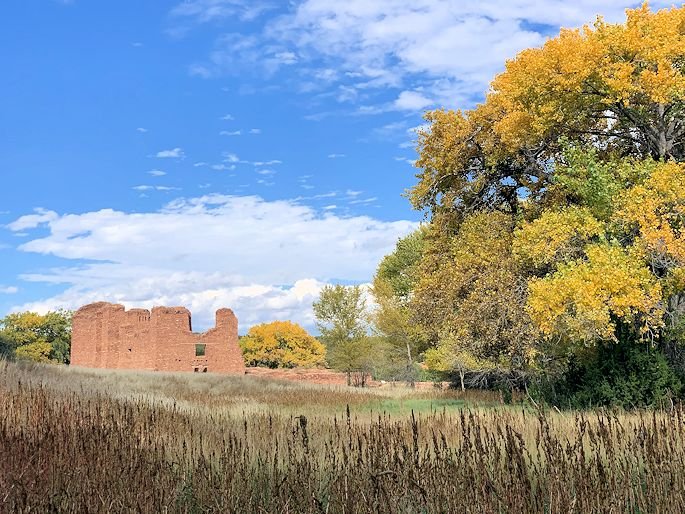
Salinas Pueblo Missions
October 30, 2022
Hello again,
Well, now it's time for part 2 of our trip down to Mountainair, in central New Mexico and the Salinas Pueblo Missions National Monument. Last Saturday we took the 300+ mile roadtrip down south from San Jose to Encino, then west to Mountainair, before heading another half-hour south of that to hit Gran Quivira, the first of the National Monument's three sites. Then, after returning to Mountainair, we went another ten miles west to the ancient spring at Abo, before returning to Mountainair for the last time and then heading to Quarai, the last of the three sites, nestled in the foothills of the Manzano Mountains about ten miles northwest of town. What follows is a brief description of each site.
Gran Quivira
This villlage, also known as Las Humanas, was a big trading center both before and after the Spanish entered New Mexico in 1540. Conducting a large amount of trade with the buffalo-hunting Plains Indian tribes from the southern High Plains, this was always a big crossroads of cultures: Mogollon tribes from the south; Puebloan tribes to the north and northwest; and Plains tribes to the east. After the Spanish invaded Zuni Pueblo in 1540(about 150 miles to the NW), a large influx of people landed at Gran Quivira, bringing with them new concepts, such as the cremation of their dead. The Spanish built a church here many generations later and eagerly began both harvesting souls for the Church and also wealth for this particular part of the Kingdom of Spain. The original inhabitants resisted the influence of the newcomers at first, but then, over time, began to relent and adapt to the new practices and ideas. By the 1600s the friars and missionaries were fighting with the local landowners over the use of Indian labor(using them to build churches and communities or to produce wealth for the crown and its landlords). Sooner or later the Indians kept creeping back to their original religious practices and by the 1660s the friars were burning and filling in all the kivas, where the Indians always practiced their religion. The Pueblo priests made a huge response to all of this and much tumult ensued. Coupled with increased Apache raids coming off of the Plains, then being hit by huge waves of drought and famine, Gran Quivira emptied out in the 1670s, and by the time of the great Pueblo Revolt of 1680, the place was completely deserted.
Abo
Long known for its strong and abundant spring Abo also served as a huge crossroads between the Puebloan tribes of Zuni/Acoma to the west, Puebloan tribes from the Galisteo Basin just south of Santa Fe and Plains tribes out to the east. Salt, hides and pinyon nuts were traded here and the water provided nourishment for turkeys, crops and people. By the 1620s, nearly forty years after the Spanish arrived, they began converting people in greater numbers and were finally able to build a church(most of the physical remains in each of the three sites were the churches built by the Spanish with Indian labor). This was a huge crossroads between the salt lagoons further east at Laguna del Perro and the Rio Grande Valley to the west, in an area that was known for its huge pinyon harvests. Apparently, it was from the sale of these nuts alone that the church was able to purchase an organ in the 1660s. The mission here only lasted about 50 years, and like the other sites, eventually succumbed to raids, drought, disease and other societal factors. Among the many things discovered here by later archaeologists were the remains of turkey pens and Old World watermelon and grape seeds, predating the famous vineyards of California by at least a century. Also, going much further back in time, Abo has many rock art and petroglyph sites that surround the spring in the nearby hills.
Quarai
The Spanish advance through New Mexico in 1540 missed all of the pueblos associated with Salinas Pueblo Missions, but when Juan de Onyate came back through the area in 1598, this area of the state was visited and often conflict ensued. By the 1620s missions were being established by the Spanish priests, trying to incorporate native practices in their underground kivas with Catholic thought. Oftentimes, the use of kivas became a focal point and had many wars waged against them and formulated from within them. This settlement was built around 1300 AD, as many of the bigger, better-known Pueblos such as Chaco Canyon and Mesa Verde were emptying out, but also did not make it to the outbreak of the Pueblo Revolt in 1680. This particular site, nestled in a beautiful cottonwood grove, also was the base for the Inquisition in New Mexico for quite some time, and one can only imagine the harrowing stories of accusation and recrimination that surely must have come from that period. Again, most Native buildings were rooted in stone foundations, but the upper stories were built from timbers and adobe and have not survived. Walking through these sites, you just see the rubble from the massive Indian apartment complexes and then the hulking, deteriorating frames from the old churches, some even with kivas located beneath their altars!
So, I have another huge collection of photos for your perusal. As you can see from the National Monument panel at Gran Quivira, with its sketch of what a village would have looked like, you can let your mind run wild and imagine the multi-storey adobe apartments, many subterranean kivas(which would have been covered by wooden beams and adobe) and grand churches all set next to each other in close proximity. Its not too far of a stretch to imagine the many multi-cultural, multi-lingual and multi-spiritual situations that must have arose from within all of these walls, not just from between the Spanish and the Indians, but from between all the different groups of Indians themselves. Each site's photos is separated by a picture of a stone effigy, a black-on-white piece of pottery and a representation of a nearby petroglyph that we saw in the first little museum in Gran Quivira.
See you soon.

Effigy
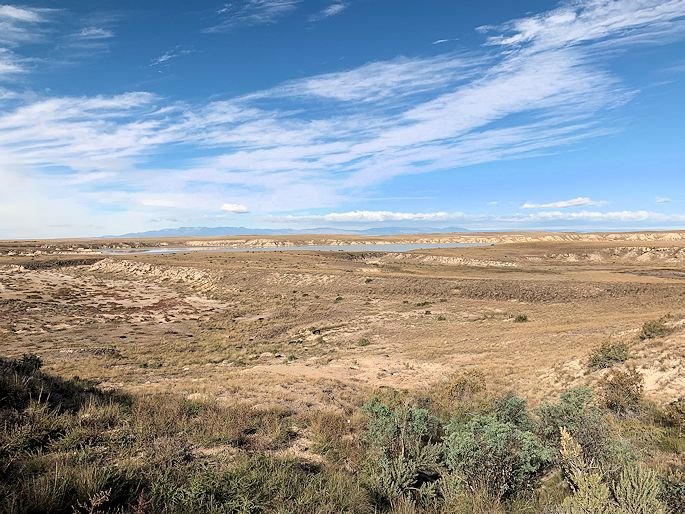
Laguna del Perro I
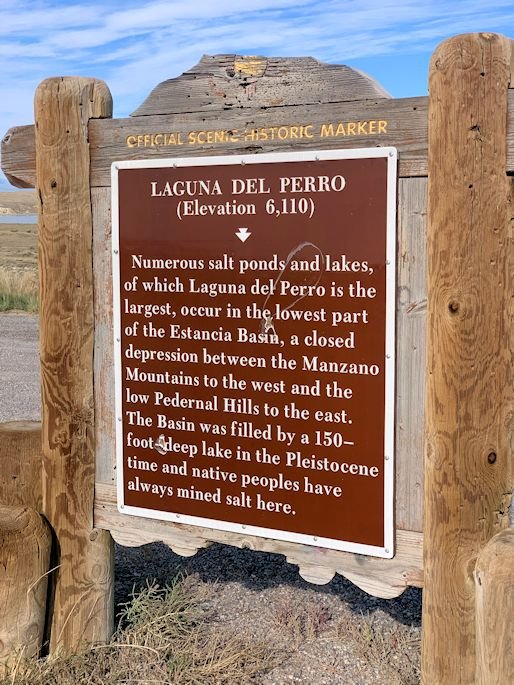
Laguna del Perro II

Gran Quivira I
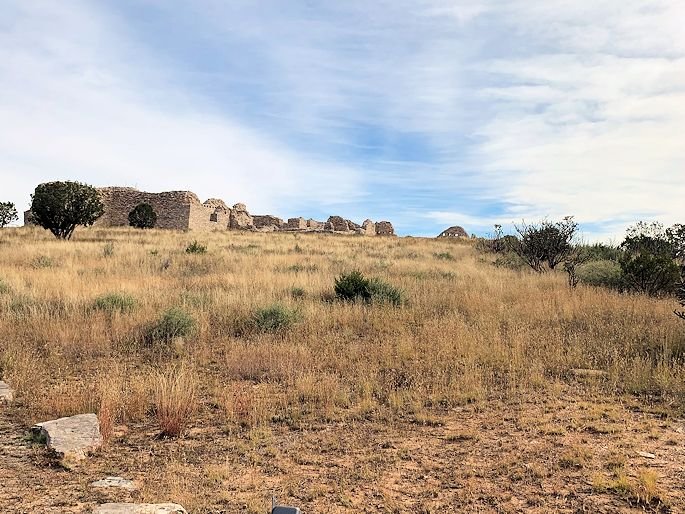
Gran Quivira II
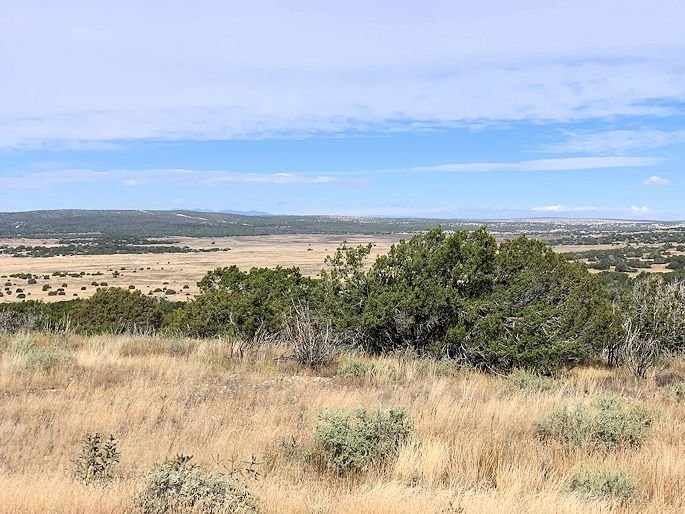
Gran Quivira III

Gran Quivira IV

Gran Quivira V

Gran Quivira VI

Gran Quivira VII

Gran Quivira VIII

Gran Quivira VIIII
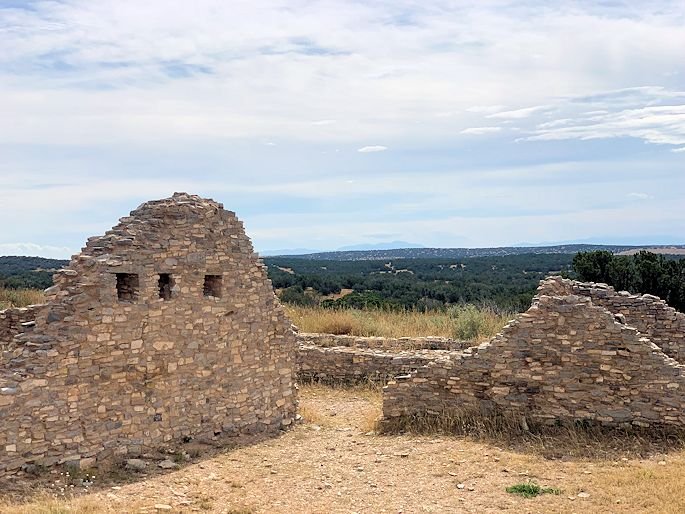
Gran Quivira X

Pottery Scene

Abo I
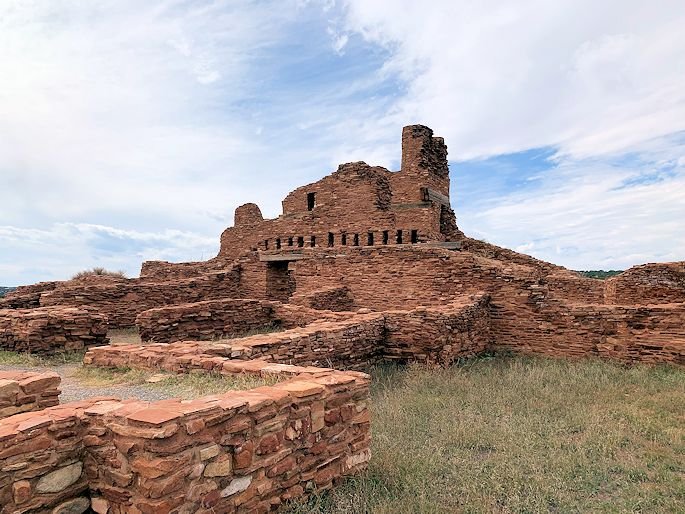
Abo II

Abo III
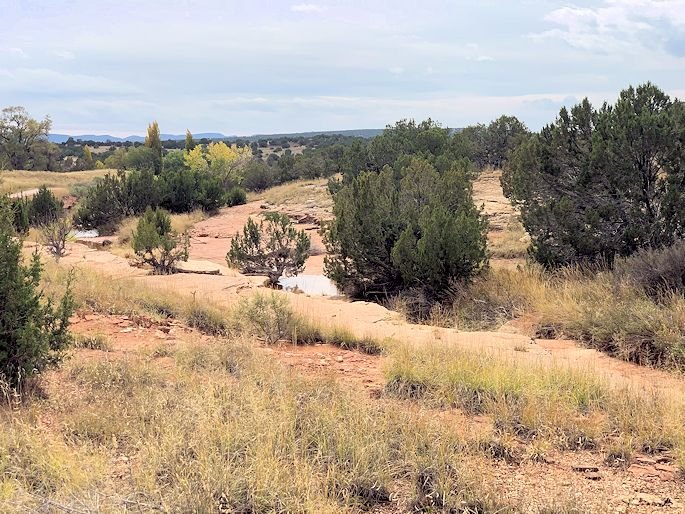
Abo IV
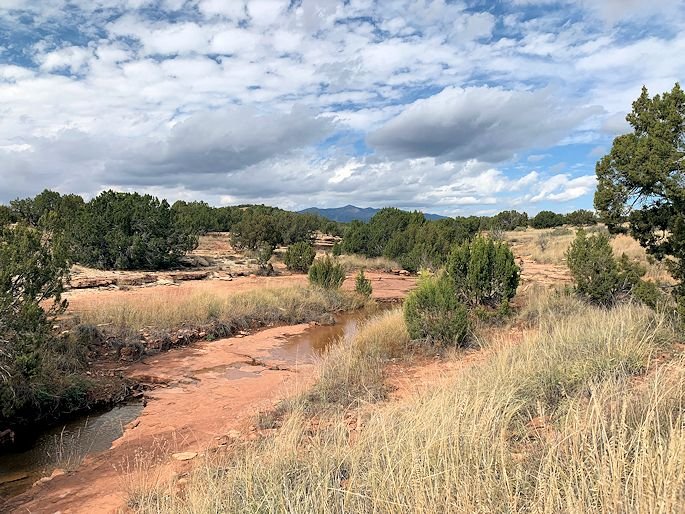
Abo V

Abo VI
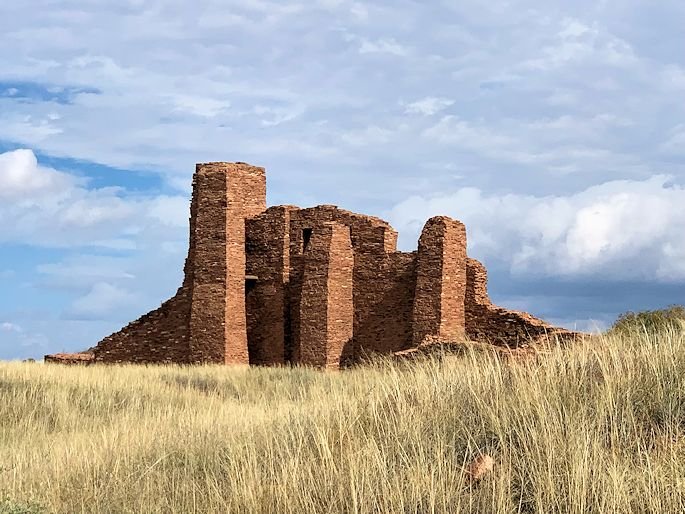
Abo VII
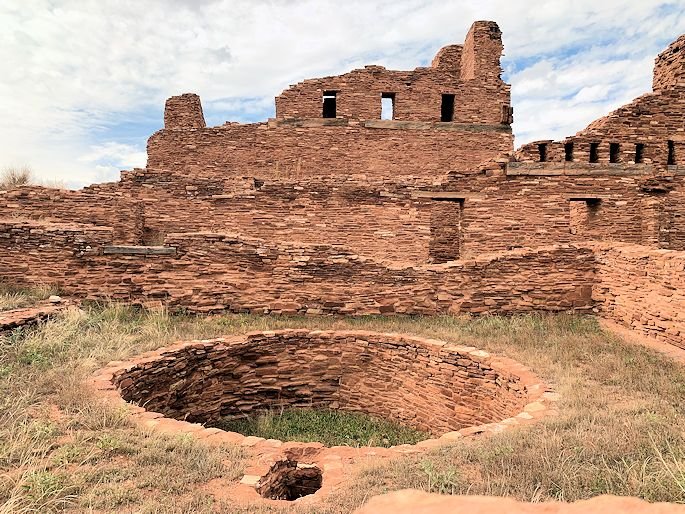
Abo VIII
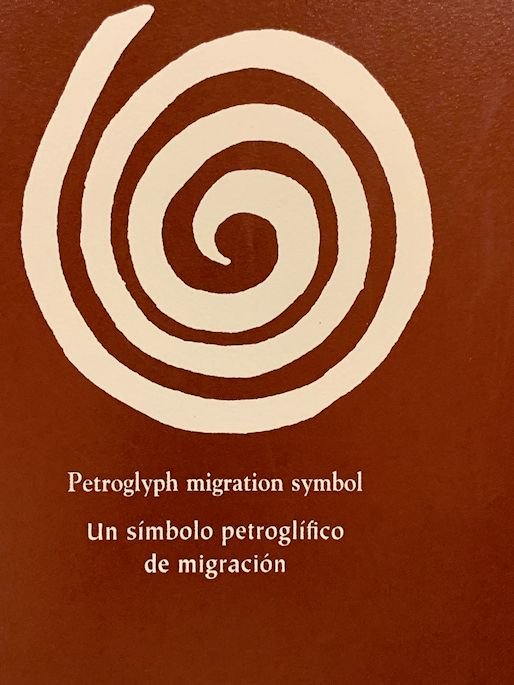
Migration Petroglyph

Quarai I

Quarai II

Quarai III
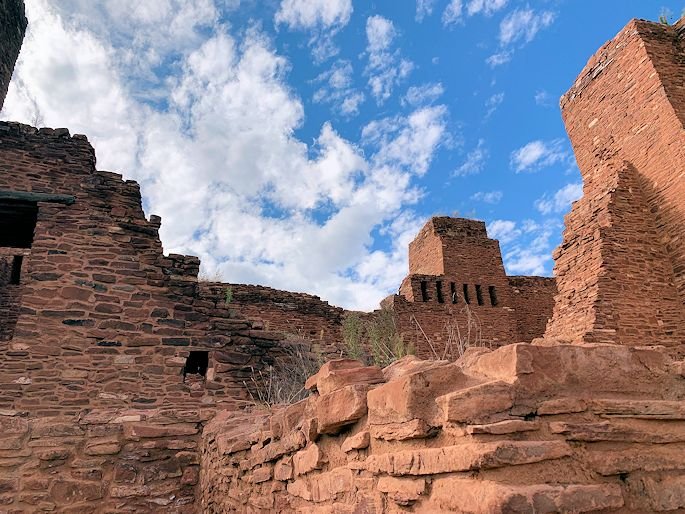
Quarai IV

Quarai V
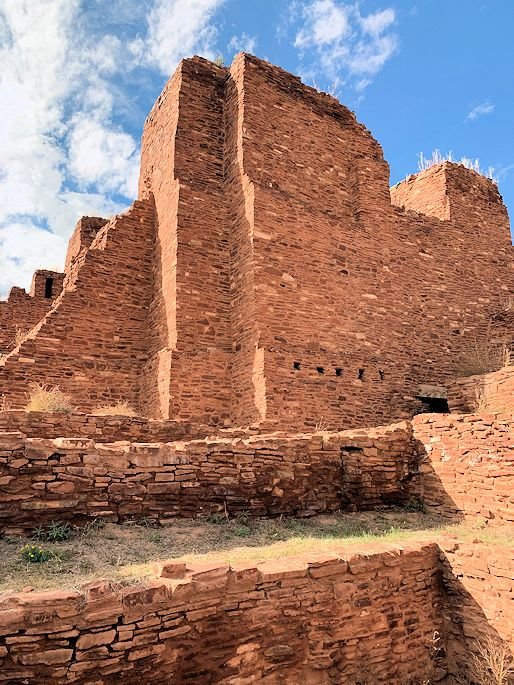
Quarai VI

Quarai VII
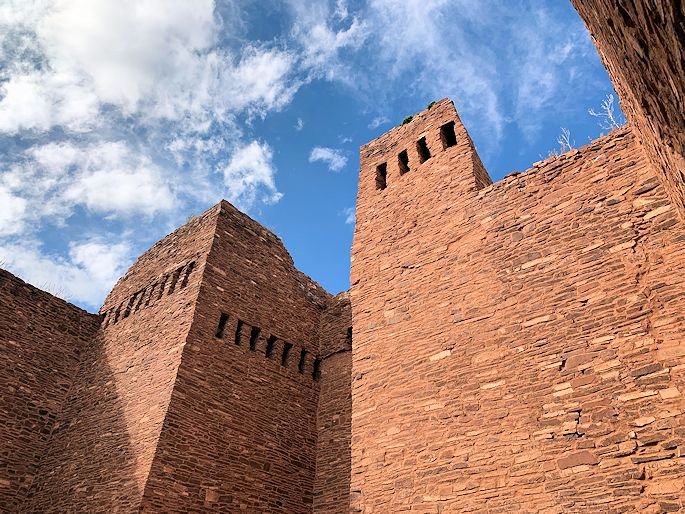
Quarai VIII

Quarai IX

Quarai X